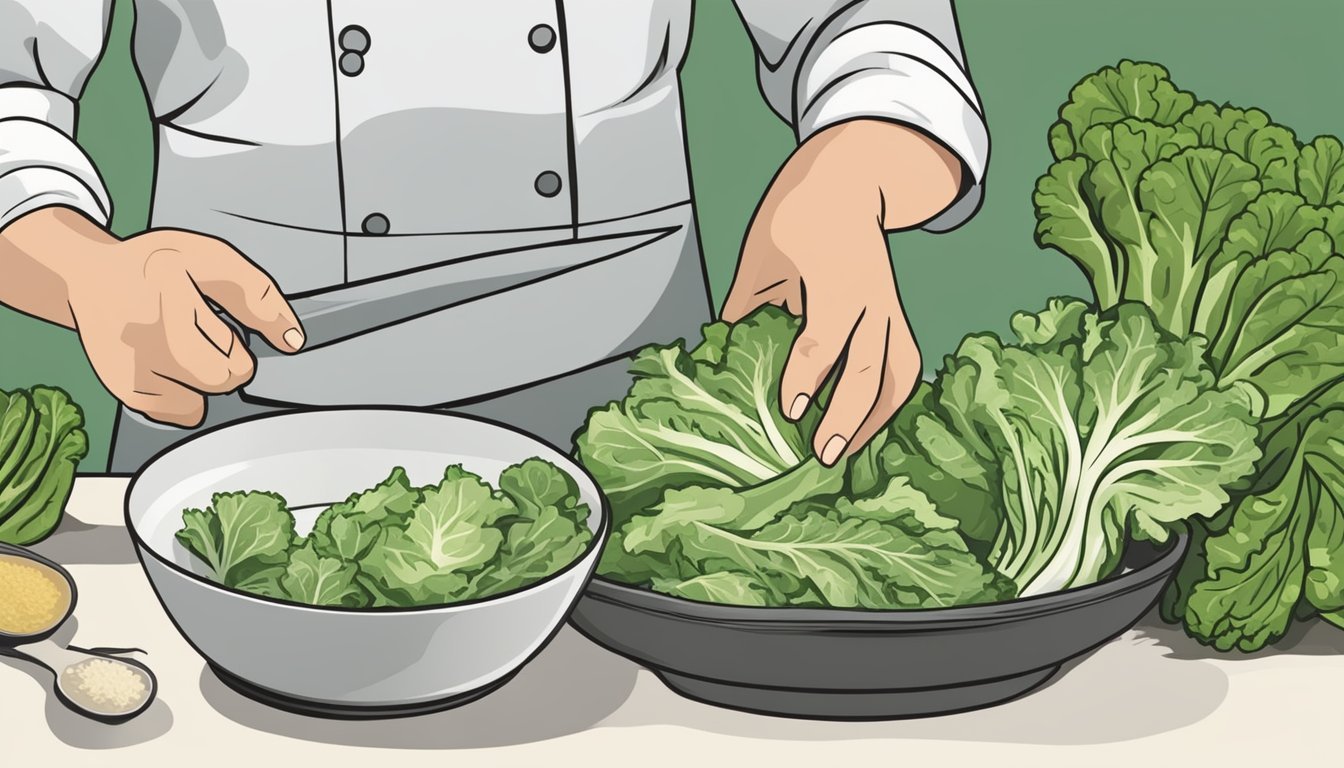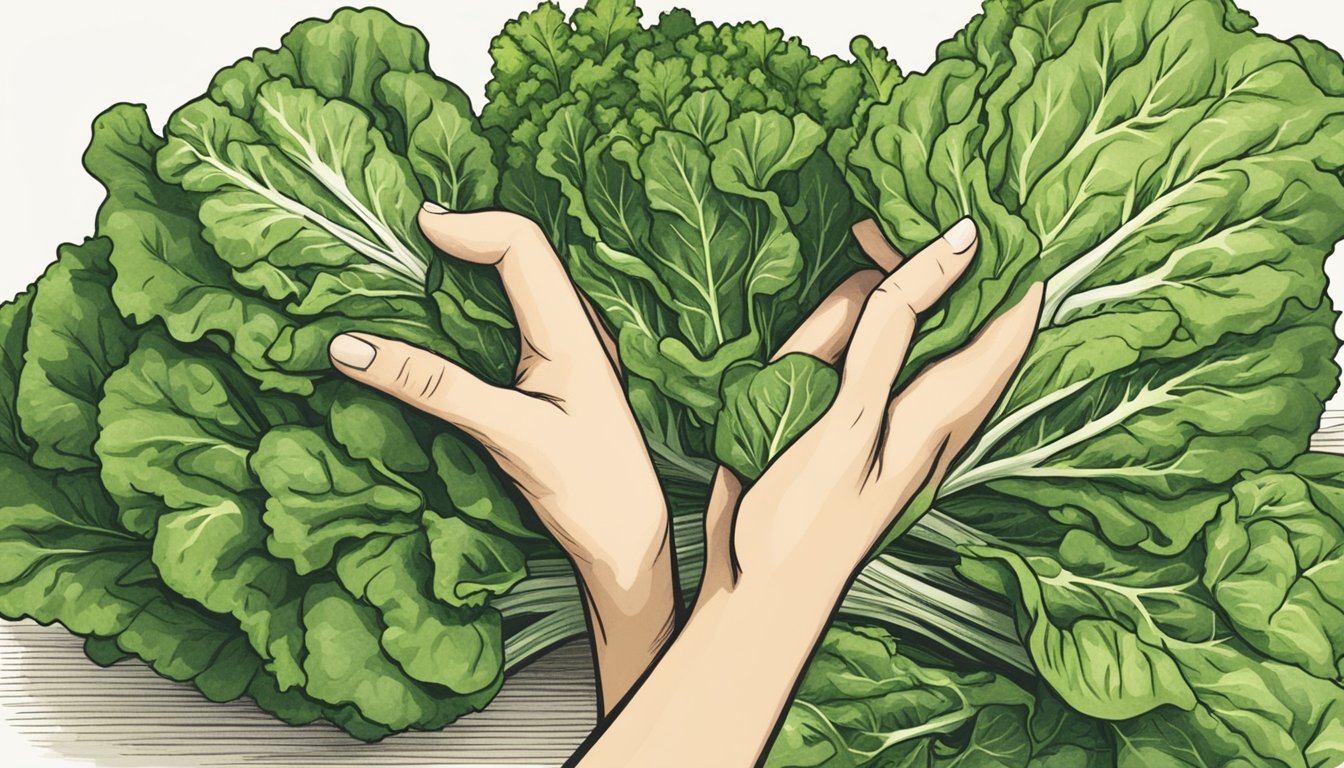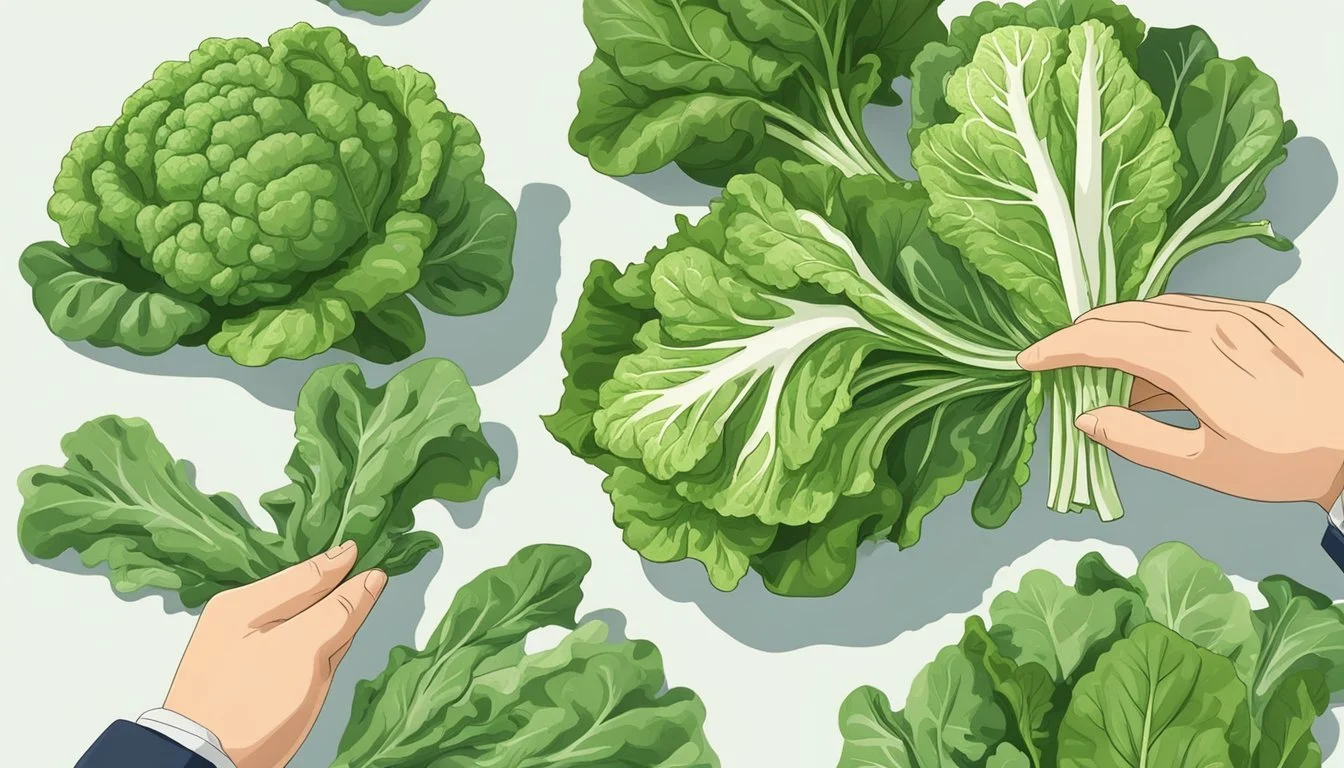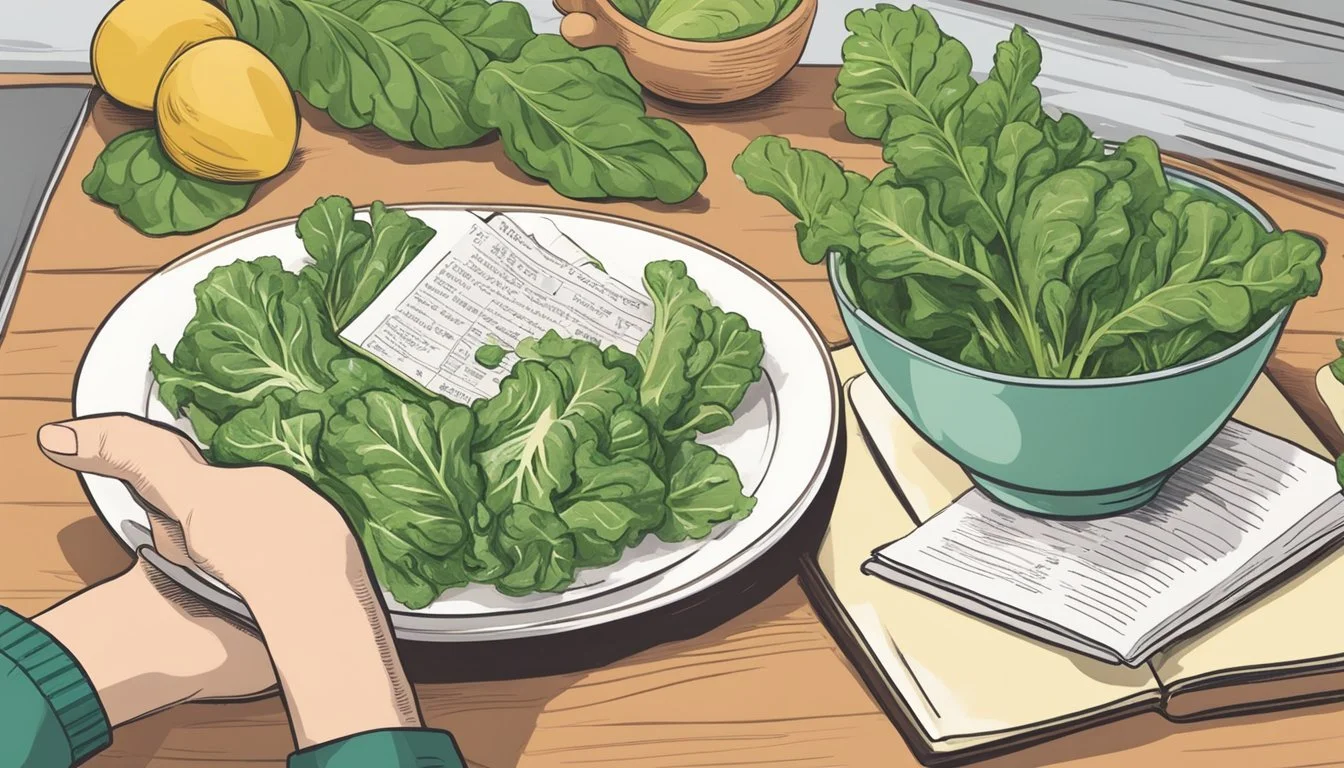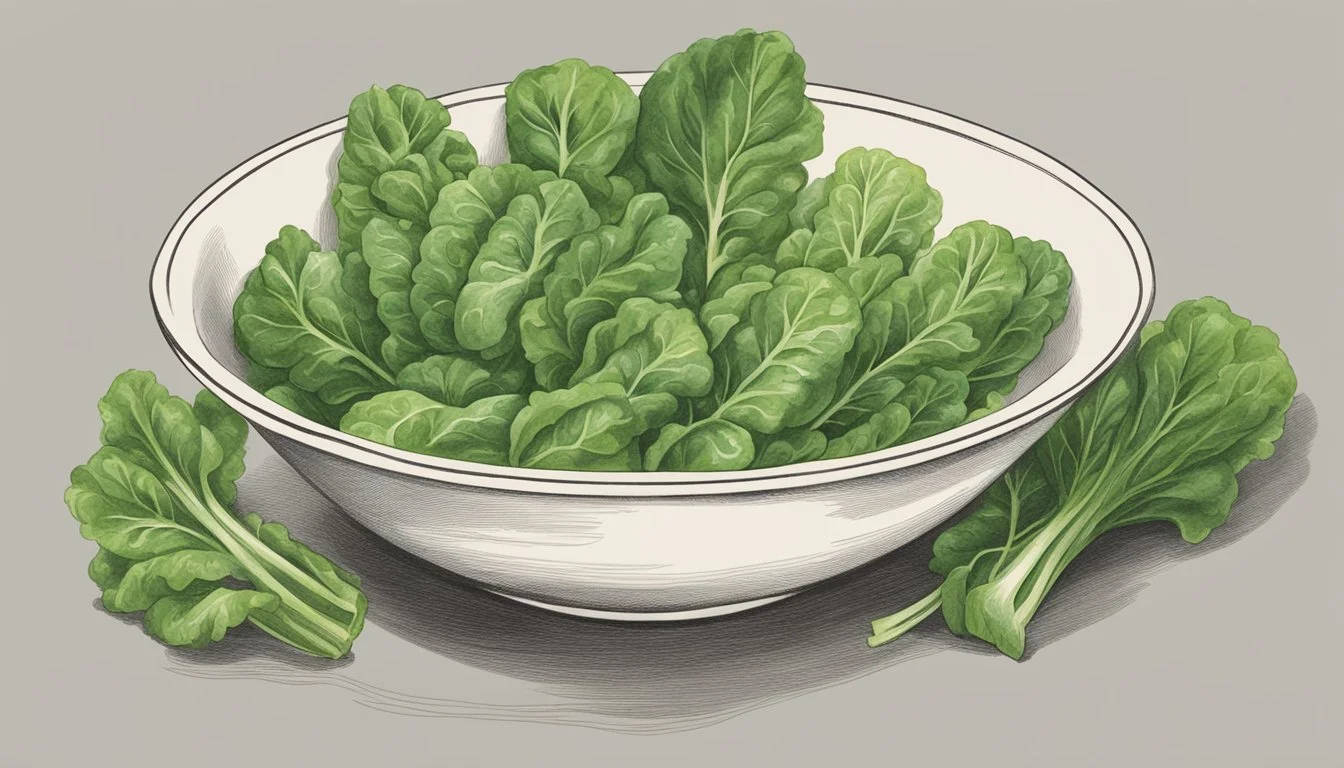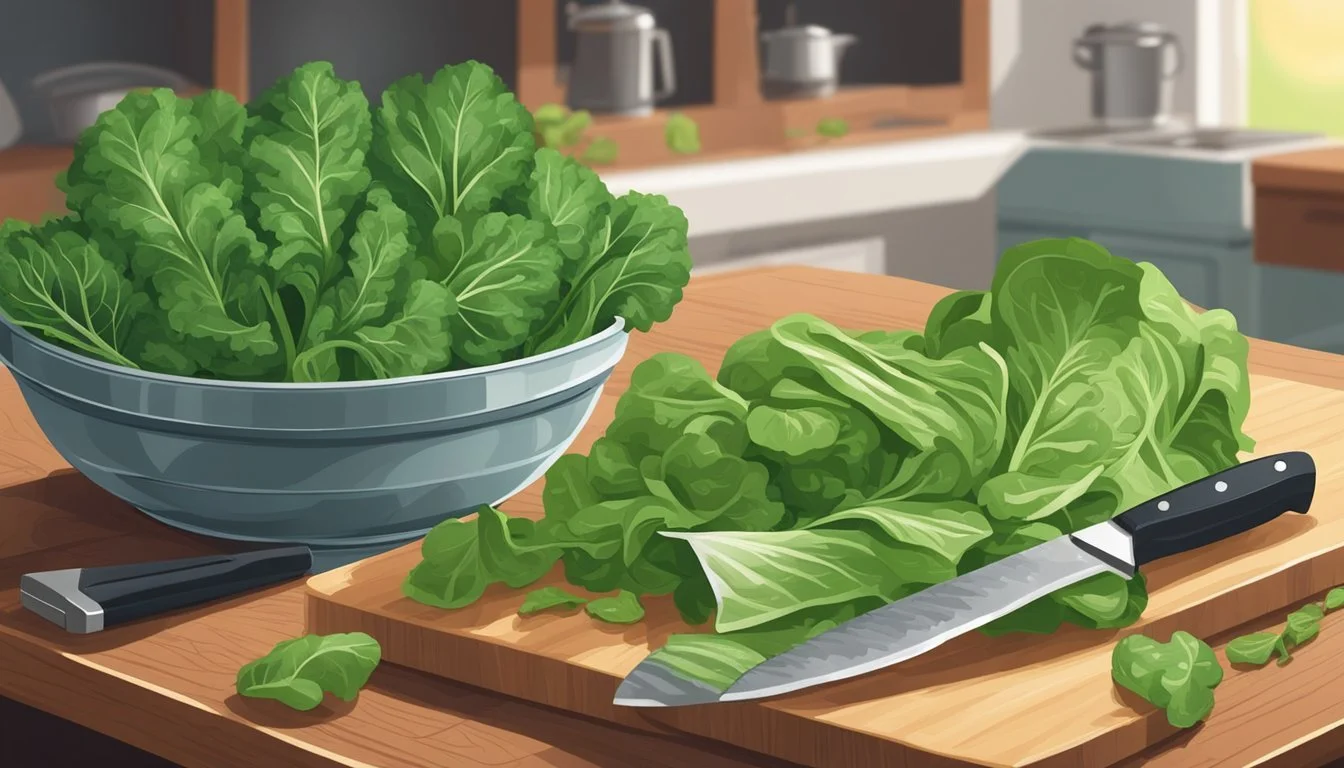How to Substitute Escarole for Spinach
A Seamless Swap Guide
Escarole is a leafy green vegetable known for its slightly bitter flavor and firm leaves. It is a member of the chicory family, often used in Italian cooking, especially in soups and salads. However, it's not always readily available in all markets or during every season. In such cases, spinach (What wine goes well with spinach?) emerges as a commonly recommended substitute due to its nutritional profile and versatility in various dishes.
Spinach offers a milder taste compared to escarole, making it an approachable alternative. It is packed with vitamins, minerals, and antioxidants, and harmonizes well with most recipes calling for escarole. While spinach might not provide the same degree of crispness, it compensates with its availability and ease of preparation. Cooked spinach can meld seamlessly into the culinary roles typically reserved for escarole, such as in pasta dishes, stews, and sautés.
For those seeking to recreate recipes that traditionally use escarole, understanding how to properly substitute spinach is key. Considering the textural and flavor differences between the two greens, adjustments in cooking times and seasoning may be required to achieve a similar end result. Taking into account these distinctions ensures that spinach is not just a last-minute replacement but a thoughtful alternative that maintains the integrity of the dish.
Understanding Escarole
Escarole is a nutritious leafy green with a distinct taste, important in various cuisines, and comes packed with a healthy nutritional profile. Here's what to know about it.
Identifying Escarole
Escarole, a member of the chicory family, can be recognized by its broad, green leaves. It distinguishes itself with a slightly bitter taste, more pronounced in its outer leaves, which tend to be darker and more curled than the inner, lighter, and more tender leaves. These elements make escarole a robust and versatile green for cooking.
Escarole in Cuisine
Escarole is used internationally, often found in soups, sautés, and salads. The less bitter inner leaves are suitable for fresh dishes, while the hardier outer leaves hold up well in heat, which is beneficial for hot applications like stir-fries or as a component in Italian pasta and bean dishes.
Fresh Uses: inner leaves in salads
Cooked Dishes: outer leaves in soups and sautés
Nutritional Profile of Escarole
Escarole is a powerhouse of nutrients, rich in vitamins A, K, and C. It's a good source of minerals such as folate and iron, provides dietary fiber, and is packed with antioxidants. Each leaf level offers a different concentration, with the outer leaves generally containing more fiber and the inner leaves usually higher in antioxidants.
Nutritional Aspects:
Vitamins: High in vitamin A, K, and C
Minerals: Contains folate and iron
Protein & Fiber: Moderate amounts of protein; valuable source of dietary fiber
Choosing Spinach Substitutes
When replacing escarole with spinach, one must consider several factors, including how the substitute will affect both the flavor and texture of the dish. It's crucial to choose alternatives that maintain the integrity of the recipe while providing similar nutritional value.
Factors for Substitution
Availability: Spinach is widely accessible across supermarkets, making it a convenient escarole substitute.
Nutritional value: Spinach offers a high vitamin and mineral content, which aligns well with escarole's nutritional profile.
Cooking application: Whether the dish requires cooking or will be served raw can dictate the best suitable spinach substitute, as some leafy greens change texture significantly when cooked.
Flavor and Texture Considerations
Flavor Profile:
Spinach has a slightly sweet with just a hint of bitterness when raw, becoming more mellow upon cooking.
Mustard Greens: Offer a peppery flavor, a bolder choice for dishes requiring a punch.
Kale: Provides a somewhat earthy flavor and maintains a firmer texture when cooked, compared to the softer texture of cooked spinach.
Texture:
Raw: When used raw, spinach should resemble the slight crunch of raw escarole. Choices like frisee or radicchio could add a more pronounced texture to salads.
Cooked: Cooked spinach wilts considerably, so for dishes requiring more bulk, alternatives like chard or kale may be more appropriate due to their thicker leaves and ability to retain structure.
Preparation Techniques
When substituting escarole with spinach in recipes, chefs should consider the adjustments needed both in the cooking times and in seasoning to ensure the dish maintains its intended flavor profile and texture.
Adjusting Cooking Times
Soups and Pasta: Spinach wilts much more quickly than escarole. It should be added in the last few minutes of cooking time.
Lasagna and Bakes: For layers in lasagna, use precooked or raw spinach as it will cook during the baking process.
Stir-fries and Sautéed Dishes: Sauté spinach for a significantly shorter period than escarole; usually 1 to 2 minutes over medium heat will suffice.
Seasoning Adjustments
Spinach has a milder taste and may not carry the same bitterness as escarole, so you might need to adjust your seasonings to compensate.
Salt: Taste and add salt sparingly until the desired balance is achieved.
Garlic and Olive Oil: These can help mimic the stronger flavor of escarole. A bit more garlic or a drizzle of olive oil can enhance the character of the dish.
Acidic Components: A squeeze of lemon juice can brighten the dish and bring forward the flavors akin to that of escarole.
Escarole in Common Dishes
Escarole is a versatile leafy green commonly incorporated into various dishes, providing a mildly bitter flavor that enhances recipes, especially in Italian cuisine. It holds up well both raw in salads and when cooked in hot applications.
Salads and Raw Applications
In salads and other raw dishes, escarole serves as a distinct green with its broad, slightly bitter leaves. It's commonly found as the base of Italian salads, paired with elements like goat cheese and radicchio for complex flavors. When substituting escarole:
Arugula can add a peppery kick, though it's softer and less bitter.
Radicchio offers a similar bitterness with a touch of color thanks to its burgundy leaves.
Bok choy and napa cabbage can be used for a crunchier texture, though they are less bitter.
Cooked Dishes
Escarole shines in cooked applications, lending its hearty texture to soups like Italian wedding soup, casseroles, and sautéed greens. It's an excellent green to layer in sandwiches for added nutritional value. When looking for a substitute in cooked dishes:
Kale and mustard greens work well, especially when cooking down in soups or casseroles, offering similar earthiness with a robust texture.
Chard and collard greens (how long do collard greens last?) may require longer cooking times but are excellent in providing a comparable hearty leaf.
Notably, tender greens like spinach may not hold up as well in cooking and may not provide the same texture but can still offer a milder flavor and quick cooking convenience.
Health and Nutrition
When substituting escarole for spinach, one should be aware of the various health and nutritional aspects each leafy green offers. These comparisons will help inform dietary choices based on individual health needs.
Comparative Nutritional Benefits
Spinach is often hailed as a superfood, packed with essential nutrients that surpass those in escarole in some categories. Notably, spinach provides a substantial amount of Vitamin K, crucial for blood clotting and bone health.
Vitamin A: Essential for vision and immune function, spinach contains more than escarole.
Vitamin C: Both greens are good sources, but spinach typically contains a higher concentration.
Vitamin K: Spinach provides significantly more, supporting bone health and blood coagulation.
Calcium: Important for bone health, spinach contains more calcium than escarole.
Magnesium: Both contribute to magnesium intake, but spinach often comes out ahead.
Potassium: Essential for heart health, both greens offer potassium, with spinach usually providing more.
Escarole, while having fewer vitamins in some respects, contributes beneficial fiber, which is important for digestive health.
The data below presents a brief nutritional comparison per cooked cup (approximately 180g):
Nutrient Spinach Escarole Calories 41 35 Fiber 4.3g 3.8g Vitamin A 377% DV 118% DV Vitamin C 29% DV 4% DV Vitamin K 987% DV 205% DV Calcium 24% DV 10% DV Potassium 24% DV 20% DV Magnesium 39% DV 10% DV
(DV = Daily Value)
Dietary Considerations
When considering escarole and spinach within the context of a diet, it is important to evaluate their contribution to daily nutritional goals. Both escarole and spinach play vital roles in a balanced diet, offering a range of health benefits beyond basic nutrition, such as supporting immune function and reducing inflammation.
Individuals focused on calorie management may prefer spinach due to its lower calorie content when compared to other greens. Conversely, for those prioritizing digestive health, the fiber in escarole may make it a favorable option.
One must also consider potential dietary restrictions. Those taking blood thinners, for example, may need to monitor their intake of Vitamin K-rich foods like spinach. Escarole offers a lower Vitamin K alternative whilst still providing benefits from other nutrients.
In summary, both leafy greens contribute to an intake of essential nutrients—one does not diminish the other's value but rather provides options to tailor a diet to meet different health goals and preferences.
Shopping and Storage
When substituting escarole for spinach, paying attention to the quality of the greens and proper storage is essential for maintaining flavor and nutritional value.
Selecting Quality Greens
Escarole: Look for escarole with crisp, green leaves free from any signs of wilting or yellowing. The leaves should be broad and slightly curly. Avoid any bunches with slimy or spotted leaves.
Spinach: Opt for spinach with vibrant green leaves and a fresh appearance. Whether choosing baby spinach or mature spinach leaves, ensure they are not limp or bruised.
Other Leafy Greens: If escarole or spinach is unavailable, consider alternatives like kale, which should possess dark, sturdy leaves, or chard, characterized by its brightly colored stems and a mix of green and red leaves. Romaine and butterhead lettuce (such as Boston or bibb) can be used for their crisp texture, while varieties of endive like Belgian and broad-leaved provide a pleasing bitterness.
Preserving Freshness
Leafy green vegetables are perishable and should be stored correctly to extend their freshness:
Escarole and Spinach: Store these greens unwashed in a plastic bag in the refrigerator's crisper drawer. Wrapping them in a paper towel can help absorb excess moisture and keep them fresh for about 3-5 days.
Other Greens: Kale, chard, and collard greens can be stored similarly to escarole and spinach. Keep them refrigerated in a loose plastic bag with a paper towel to maintain their freshness for up to a week.
For iceberg, butterhead, and romaine lettuces, which are also suitable substitutes when leafy texture is required, ensure the leaves are dry and refrigerate them in a perforated bag with a paper towel to manage moisture.
By selecting high-quality greens and adhering to these storage tips, the leafy vegetables can retain their optimal taste and nutritional benefits, making for successful spinach substitutions in recipes.
Alternatives to Escarole
When a recipe calls for escarole, various leafy greens and non-green produce can act as substitutes, offering similar textures and flavors suited to both raw and cooked dishes.
Other Leafy Green Options
Leafy greens from the Amaranth and Cabbage families serve as excellent escarole substitutes. They bring diverse textures and flavors, ranging from sweet to bitter, and can be used in salads, soups, and cooked recipes.
Radicchio: A bitter green with purple leaves, ideal in raw or cooked dishes.
Endive and Curly Endive: Closely related to escarole, these offer a similar texture and slight bitterness.
Romaine Lettuce: Crisp with a mild taste, useful in raw applications.
Swiss Chard: Known in some regions as Chinese spinach, offers a colorful and tender alternative when cooked.
Mustard Greens: They add a peppery kick, which can enhance the dish's flavor profile.
Spinach: A versatile green with a slight sweetness, spinach can be used in various dishes, maintaining a soft texture when cooked.
Non-Green Alternatives
Beyond leafy greens, several other vegetables from different families can fill in for escarole, providing unique tastes and consistencies.
Bok Choy: Also known as Chinese cabbage, it imparts a mild taste with a crunchy texture.
Butterhead Lettuce: Includes varieties like Boston and Bibb, which contribute a soft and buttery feel, ideal for raw uses.
Iceberg Lettuce: Offers crunch but less flavor, suitable for salads and other raw preparations.
By choosing the appropriate substitute based on the desired texture and flavor intensity, one can effectively replace escarole in various culinary applications.
Frequently Asked Questions
Q: What is a good escarole substitute in Mediterranean or Italian cuisine?
A: Spinach is an excellent escarole substitute. It can be used in various dishes, maintaining the essence of the cuisine due to its versatility and availability.
Q: Why might someone need a replacement for escarole?
A: They may seek an escarole substitute if it's unavailable at their local store, if they are looking to vary their diet with different greens, or if they prefer the taste or nutritional profile of the substitute.
Q: Can spinach match escarole’s nutritional profile?
A: While spinach may not be identical to escarole, it is still nutritionally dense, offering high levels of minerals and vitamins. It exceeds escarole in lutein content, important for eye health.
Q: How does one convert from escarole to spinach in recipes?
A: When substituting spinach for escarole, use a cup of packed spinach leaves for every head of escarole. This maintains the volume and texture in dishes such as soups, sautés, and casseroles.
Q: Will the taste of spinach differ from that of escarole in recipes?
A: Yes, spinach tends to be slightly sweet with a barely noticeable bitter taste when raw, unlike escarole’s more notable bitterness. This difference can be considered when using spinach in salads or as a cooked side dish.
Q: Are there any specialty foods that require escarole specifically?
A: Some traditional recipes may call for escarole specifically for its unique bitterness. However, spinach can still be used as a reliable substitute in most dishes without significant loss of traditional flavors.
Conclusion
Substituting escarole for spinach in recipes is a straightforward process, given that both leafy greens share a number of characteristics. When making the switch, individuals can expect a dish that retains a wealth of essential nutrients and potential health benefits.
Escarole and spinach are packed with vitamin K and folate, contributing to cardiovascular health and cell growth. Spinach is slightly sweeter and milder, while escarole offers a light bitterness, which can be a delightful contrast in flavor profiles.
Here's a brief summary of the nutrient content comparison:
Nutrient Escarole Spinach Calcium Higher Lower Potassium Higher Lower Magnesium Higher Lower Protein Higher Comparable Fiber Higher Comparable
Those looking to maintain a balanced diet should note that escarole's protein and fiber levels are either comparable to or exceed those found in spinach. Consequently, one can be assured that they are not compromising on dietary needs when opting for escarole.
Whether one incorporates these greens fresh in salads, sautéed as sides, or wilted into soups and stews, both spinach and escarole can serve as nutritious components of a meal. Chefs and home cooks alike can confidently adapt their recipes by considering these greens interchangeable, whilst anticipating slight variations in taste and texture that can enhance a dish's character.

